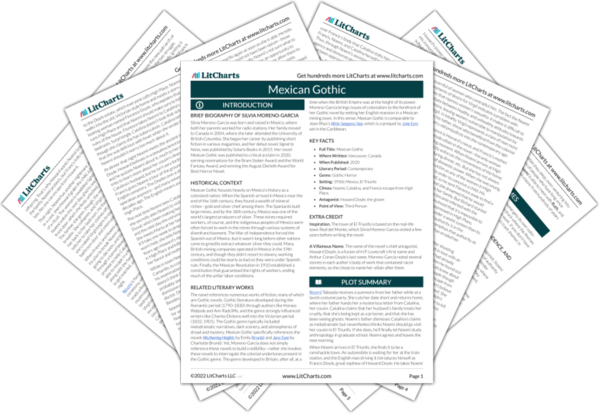The ouroboros is a circular symbol meant to represent the cycle of death and rebirth, but the novel complicates this simple meaning by depicting how old, recycled ideas can be harmful to societal progress. Howard Doyle chose the ouroboros as his family’s crest, and the image of a serpent eating its own tail can be found throughout High Place. It’s obvious that Howard chose the symbol because his own immortality relies on cycles of death and rebirth, where infants are consumed in order to fuel the rebirth of Howard’s consciousness in a new body after his current one dies. But Howard’s continuous revival means that his antiquated ideology also persists. He believes in a pseudoscience known as eugenics, which concludes that certain races have superior genetic traits when compared to other races. He also believes that a woman’s duty lies solely in marriage and childbirth. Howard’s immortality ensures the survival of these racist, sexist, and hateful beliefs, and numerous characters in the novel suffer or die because of them. Thus, though immortality can seem desirable, the ouroboros comes to symbolize something darker: a cyclical invulnerability to change and progress that stunts new ideas and preserves old prejudices.
The Ouroboros Quotes in Mexican Gothic
It wasn’t ugly. That wasn’t what repulsed her. But it seemed to her it represented the youthful fancies of another girl, of a dead girl. Perhaps two girls. Had Virgil’s first wife worn this too?
It reminded her of an abandoned snake’s skin. Howard would slough off his own skin, would sink into a new body, like a blade entering warm flesh. Ouroboros.

Unlock explanations and citation info for this and every other Mexican Gothic quote.
Plus so much more...
Get LitCharts A+He would die, he would slide into a new body, and Francis would cease to exist. A demented cycle. Children devoured as babes, children devoured as adults. Children are but food. Food for a cruel god.












